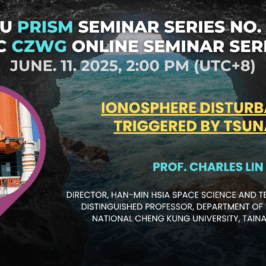Dehui Wan (萬德輝)1, *
1Institute of Biomedical Engineering, National Tsing Hua University
*dhwan@mx.nthu.edu.tw
摘要 (abstract)
Spacecrafts (e.g., satellites, space stations, and solar power stations) are subject to more intense solar radiation, which presents a range of challenges that are significantly different from those encountered on Earth. The surface temperature can reach several hundred degrees Celsius, which could damage the internal electronic components and cause failure of expensive spacecrafts. Solar-induced thermal challenges in spacecrafts may be overcome by integrating passive radiative cooling (PRC) with aerogels having thermal insulation (TI). Herein, I will introduce a universal radiative cooling silica aerogel (UCSA), which is prepared through the simple regeneration and freeze-drying of commercial quartz fiber membranes. The optically engineered UCSA with a hybrid structure (silica nanofibers/microbeads) achieves remarkable solar reflectance (RS.E.= 98.1%) and atmospheric transparency window emittance (εATW= 92.1%) under Earth conditions, with a theoretical daytime cooling power of 103.3 W m–2. In the harsh space environment, it exhibits ultrahigh average solar reflectance (RS.S. = 99.1%) and broadband mid-infrared emittance (εMIR= 90%), achieving a cooling power of 354.1 W m–2. Compared to single-functional approaches, UCSA synergistically integrates the PRC and TI performance for excellent thermal management capability. Finally, a USCA-covered box achieves an average sub-ambient cooling of 18.6 °C when exposed to sunlight.
關鍵詞:passive radiative cooling, thermal insulation, thermal management, ceramic nanofibrous aerogel, hierarchical structure


